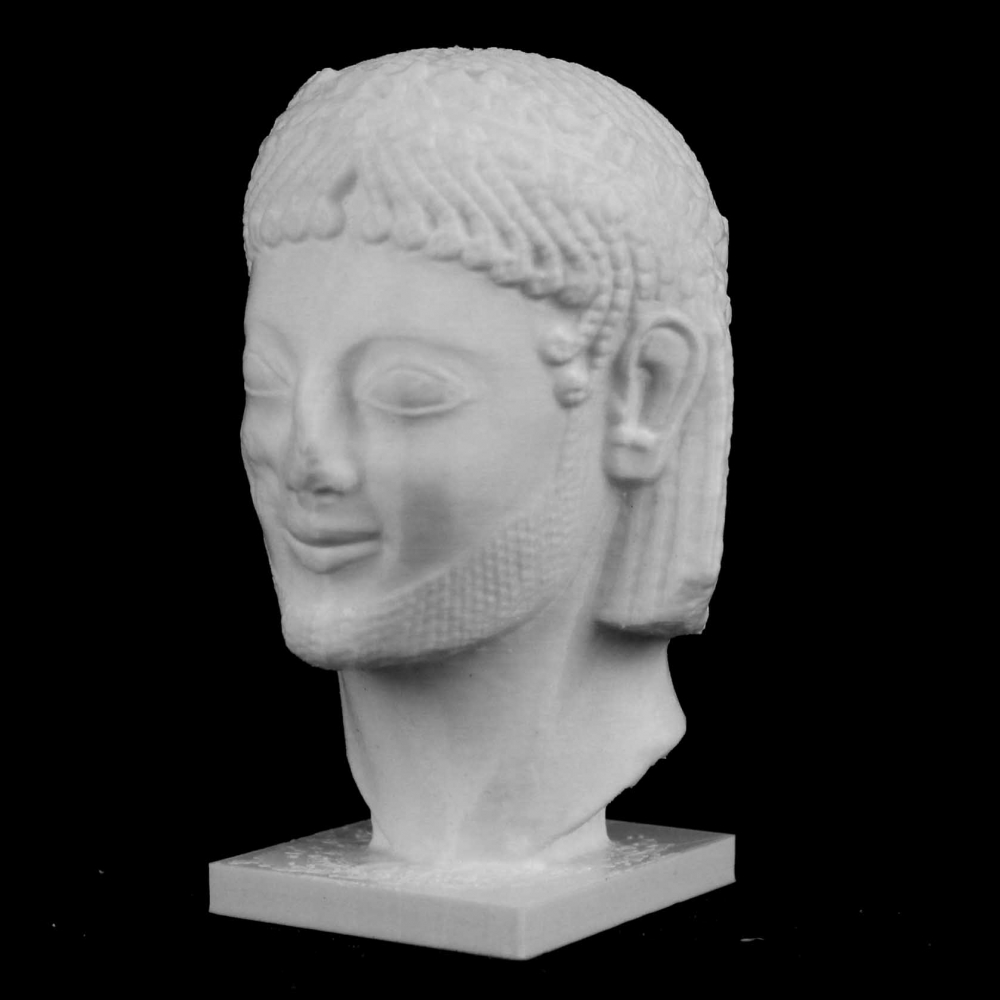
Head of The Rampin Rider at The Réunion des Musées Nationaux, Paris
myminifactory
The Rampin Horseman stands as a masterpiece of Archaic art, seamlessly blending Attic seriousness with the rich ornate tradition of eastern Greece. The original head, placed on a mold taken from a fragmentary equestrian group in the Acropolis Museum in Athens, exudes an air of mystery. We are left to ponder whether this horseman is a hero or a member of the esteemed Athenian aristocracy, with the crown of leaves on his head possibly symbolizing a victory prize awarded at one of the Panhellenic games. Discovered on the Acropolis in 1877, this male head was crafted around 550 BC. It was acquired by Georges Rampin and left to the Louvre in 1896. Ten years prior, a body of a horseman and fragments of a horse had been unearthed on the Acropolis; they were excavated from a ditch dug to hold statues that were broken during the sack of Athens by the Persians in 480 BC. It wasn't until 1936 that English archaeologist Humphry Payne linked this head with the equestrian group in the Acropolis Museum in Athens (molds of the group have been added to the Louvre's presentation of the head). The asymmetrical neck, a peculiarity in sixth century BC sculpture, can be attributed to the fact that the group likely consisted of two horsemen forming a pair. The identity of the horseman remains shrouded in mystery. For an extended period, the hypothesis of a second horseman led many to believe it was dedicated to Hippias and Hipparchus, the sons of Pisistratus, whose names seemed destined for horseback riding prowess. In ancient Greece, horses were a privilege reserved for members of the aristocracy. The monument would have been erected after the return of the tyrant to Athens in 546 BC, leading many to suppose that it depicted Castor and Pollux-equestrian heroes frequently featured on vases between 550 and 510 BC-without ruling out the Dioscuri or the Pisistratidae as subjects. A closer examination of the fragments revealed they belonged to other horses, dispelling these hypotheses. If this is indeed an ex-voto, it would feature a single horseman, with the Rampin Horseman being one among many offerings dedicated on the Acropolis by victorious horsemen. These sculptures depicted the winner in a horse race cheered by the crowd, which he acknowledges with a turn of his head. This new interpretation explains the presence of a crown of lovage in the horseman's hair; this species of wild celery was used to crown winners in both the Nemean Games and the Isthmian Games held in Corinth. The execution of the Louvre's head is a masterful display of skill. It is sometimes attributed to the "Rampin Master," the sculptor of the Athens kore wearing a peplos (530 BC; Acropolis Museum). The two pieces share the same Attic concept of the face: the triangular structure is framed by high cheekbones and a pointed chin, and the face is welcoming, animated by almond-shaped eyes and a gentle smile. Nevertheless, the Rampin Horseman seamlessly blends sobriety with richly decorative hair ornamentation. The thickness of the beads, the fringe consisting of small rolled plaits, and the beaded work on the beard showcase the influence of eastern Greece, which spread to Athens via Ionian immigrants fleeing Asia Minor and the Persian threat. Red and black polychrome, partially preserved, adds to this sense of refinement. This object is part of "Scan The World," a non-profit initiative introduced by MyMiniFactory, through which we are creating a digital archive of fully 3D printable sculptures, artworks, and landmarks from across the globe for the public to access for free. Scan the World is an open-source community effort, if you have interesting items around you and would like to contribute, email stw@myminifactory.com to find out how you can help. Scanned using Photogrammetry (Processed using Agisoft PhotoScan).
With this file you will be able to print Head of The Rampin Rider at The Réunion des Musées Nationaux, Paris with your 3D printer. Click on the button and save the file on your computer to work, edit or customize your design. You can also find more 3D designs for printers on Head of The Rampin Rider at The Réunion des Musées Nationaux, Paris.
